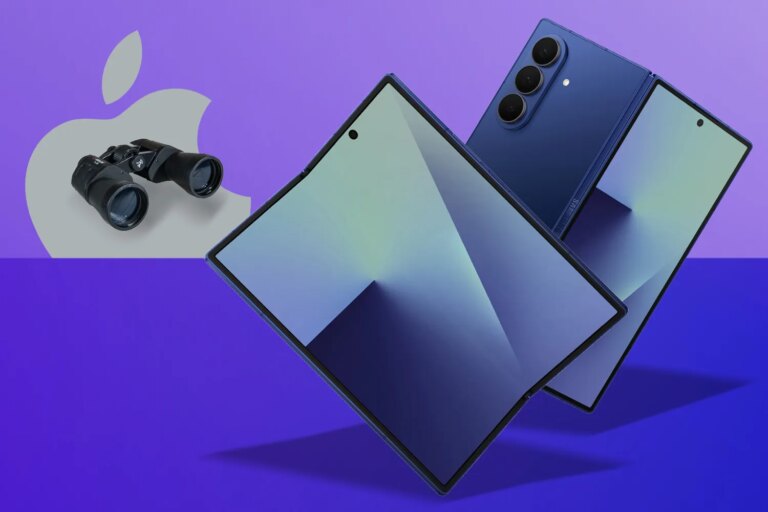Steve Ballmer had a point. Or maybe half a point. When the iPhone first landed, he yelped, wide-eyed, “$500, fully subsidised, with a plan? [That] is the most expensive phone in the world!” Apple’s pricing back then might have been a shock to the industry – but it turns out Apple was just getting started. Now, according to a professional guesser over at JPMorgan, the upcoming iPhone Fold will cost two grand in the US. Which will almost certainly translate to the same in Brit-o-pounds. My credit card has pre-emptively fled. But if I can catch it, could anything convince me to spend that amount of money on a foldable iPhone?
Let’s take a step back. The iPhone has always lived at the spendy end of tech. What Ballmer misunderstood is that people are happy (or at least willing) to pay for that, because the iPhone quickly became more than just a phone. He mocked its lack of a keyboard (“which makes it not a very good email machine”) while missing the revolutionary nature of a touchscreen that enables a device to ‘be’ anything. Today, Windows Phone is a footnote. The iPhone is a cash machine.
But there is a line where I start to question the value proposition of any smartphone. With the iPhone X, Apple decided its top-tier phone should cost the same as an entry-level MacBook Air: $999/£999. Soon after, Apple smashed through the four-figure pricing threshold in the US and the UK. Today, a Pro Max starts from $1199/£1199. But two grand? That’s something else. For that money, you’re into MacBook Pro M4 Pro territory. Or, to put it another way, for just $50/£30 more than the rumoured price of an iPhone Fold, you could walk out of an Apple Store with a MacBook Air, an iPhone 16 and a set of AirPods Pro 2.
Folding money
So what might this priciest of iPhones look like? The consensus from people wearing their best prediction pants is it’ll be a lot like a Samsung Galaxy Z Fold. When folded, it’ll resemble a chunky iPhone. When unfolded, you’ll be staring at screen acres that rival what you get on an iPad mini. But for the outlay, I’d want a lot more than a bunch of iPhone apps blown up and presented in square-o-vision.
Apple would need to bring across windowed mode from the iPad. If I’m spending MacBook Pro money on a phone, it’d better at least try to be my only device. That means, yes, Apple finally giving us an iPhone with desktop mode support. But a bigger hurdle might be durability. Foldables are notoriously fragile. And would even a barely perceptible crease make it past Apple’s exacting hardware design standards? There’s no hiding a screen bump with software trickery, like Apple did with the selfie camera and Dynamic Island. (It’d also be nice if, by the time the folding iPhone arrived, Liquid Glass didn’t suck, because it’d be twice as insulting across two screens on the one device.)
Without all that – the flexibility, the durability and the power – I don’t see the appeal. I don’t have money to burn. The last thing I need is a colossally expensive smartphone that needs to be handled like the most fragile of eggshells, while still being hobbled by Apple’s reluctance to unleash the full potential of the hardware.
Android is creeping towards a one device to rule them all future. My fear? The iPhone Fold will simply be an even more colossally expensive iPhone.
Read the full article here
